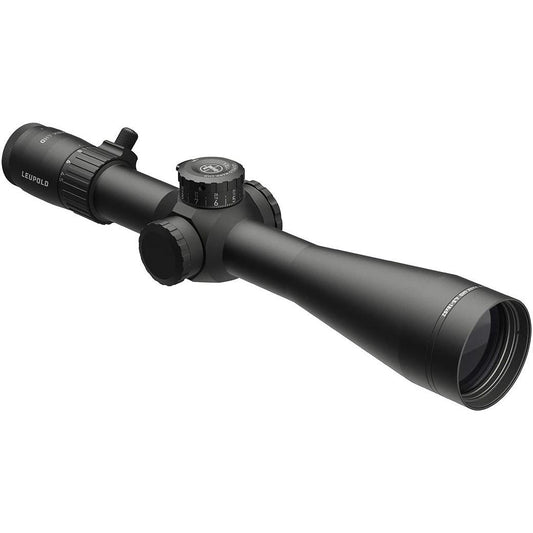

Leupold Mark 4HD Rifle Scope 4.5-18x52 34mm FFP PR1-Mil Illum. Black features a first focal plane design that allows for consistent reticle subtensions across all magnification levels. This scope is equipped with a wide 4.5-18x magnification range, offering versatility for both close-quarter engagements and long-range precision shooting. Its advanced optical system ensures clarity and brightness in various lighting conditions, making it suitable for both day and low-light use.
Engineered for rugged environments, this rifle scope is waterproof, fogproof, and shockproof, ensuring it performs reliably in harsh conditions. The M5C3 ZeroLock windage and elevation turrets provide precise adjustments that hold their position, even under recoil. With a side focus feature that allows for sharp images from as close as 25 yards, the Mark 4HD is designed for both tactical and competitive shooting scenarios.
Key Features:
- FIRST FOCAL PLANE for accurate reticle subtensions at any magnification.
- RUGGED DESIGN ensures reliability in extreme environments with waterproof, fogproof, and shockproof features.
- FOUR-TO-ONE ZOOM RATIO offers versatility for various shooting distances.
- PRECISION ADJUSTMENTS with M5C3 ZeroLock turrets that maintain settings through recoil.
- SIDE FOCUS allows clear targeting from 25 yards, enhancing close-quarter versatility.
- ILLUMINATED RETICLE enhances visibility in low-light conditions for tactical use.
- LIGHTWEIGHT CONSTRUCTION ensures ease of use without compromising durability.
- PROFESSIONAL-GRADE OPTICS deliver clarity and brightness in all lighting scenarios.
Technical Specifications Table
| Magnification | 4.5-18x |
|---|---|
| Objective Lens Diameter | 52mm |
| Tube Diameter | 34mm |
| Length | 13.6 inches |
| Weight | 27.5 oz |
| Reticle | PR1-Mil |
| Waterproof Rating | IPX-7 |
| Fogproof | Nitrogen Purged |
What's in the Box?
- Leupold Mark 4HD Rifle Scope
- Lens covers
- Padded case
- User manual
Customer Reviews
"The clarity at long distances is impressive. Great for both hunting and tactical use." - John D.
"Rugged and reliable. I trust this scope in all weather conditions." - Sarah K.
"The illuminated reticle is a game-changer for low-light hunting." - Mike T.
FAQ
What makes the Leupold Mark 4HD different from other scopes?
Its first focal plane design ensures that reticle subtensions remain accurate across all magnification levels. Unlike traditional scopes, this feature allows for precise holdovers at varying distances, making it especially useful for long-range shooting.
How do I maintain the Leupold Mark 4HD?
Regularly check the scope for any signs of wear, especially after field use. Clean the lenses with a microfiber cloth and lens cleaner, and store it in a protective case to prevent scratches. Ensure that all mounting hardware is secure before each use.
Can this scope be used for night vision?
Yes, the illuminated reticle is compatible with night vision devices, enhancing visibility in low-light conditions. This feature makes it suitable for tactical applications and nighttime hunting.
Similar Models
Looking for more options? Explore our range of Leupold scopes, including the Leupold VX-5HD for versatile hunting and the Leupold VX-3i for exceptional light transmission. Discover the complete collection tailored to enhance your shooting experience.
You May Also Like
Here’s some of our most similar products people are buying. Click to discover trending style.






